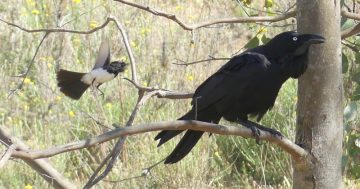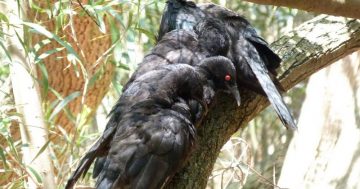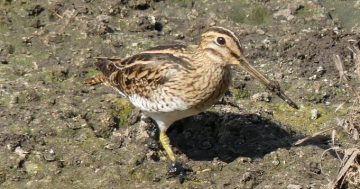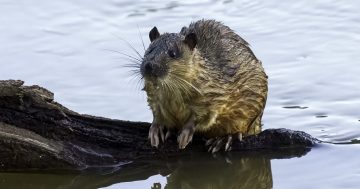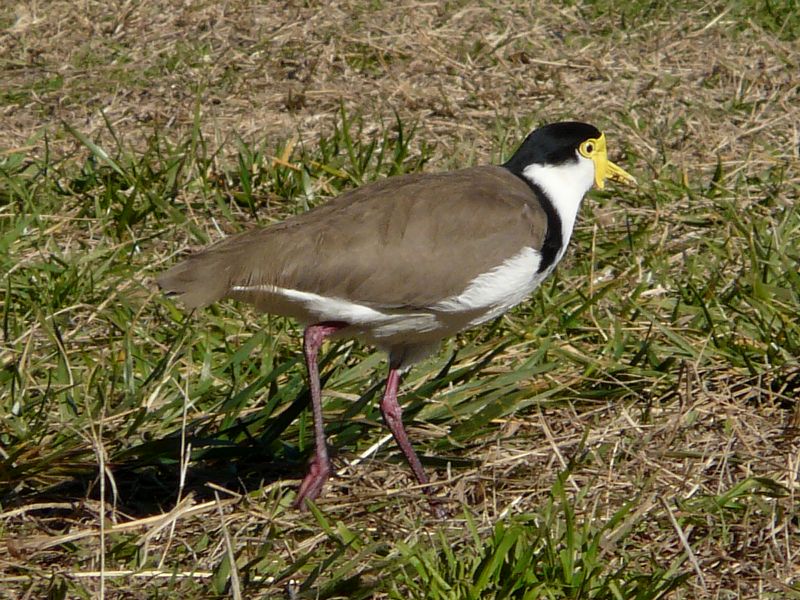
Masked Lapwings are common in Canberra and easily recognised. Photo: Ian Fraser.
Coming to a patch of grass near you right now!
In the last week I’ve seen at least three pairs of Spur-winged Plovers, as I grew up calling them, taking possession of grassy verges and even the centre strip of busy Drakeford Drive. They’re starting to nest, they like open grassy areas, and have no tolerance for anyone else who might want to intrude on their chosen site.
Masked Lapwings, to use their more formal name, literally fear nothing and no-one when it comes to defending their eggs and chicks. No matter how innocently an intruder, be it human or dog, might enter their space, they will be met by a flying fury shrieking a terrifying tirade of abuse.
It’s a brave soul who can stare down a threatening plover, large, fast and loud with open yellow bill and bright red legs. Nor is it all simply bluff. On each of the ‘elbows’ of the wings is a forward-pointing bony spur (hence the name by which I best know them) which can inflict some real damage if they come into contact with your head.
Until they lay their eggs, they’re uninterested in anyone else and aren’t at all aggressive as they forage in the grass for worms and insects. In the depths of winter, they also eat seeds for their oil content. Flocks of dozens of plovers can gather on ovals or paddocks in winter to share the food.
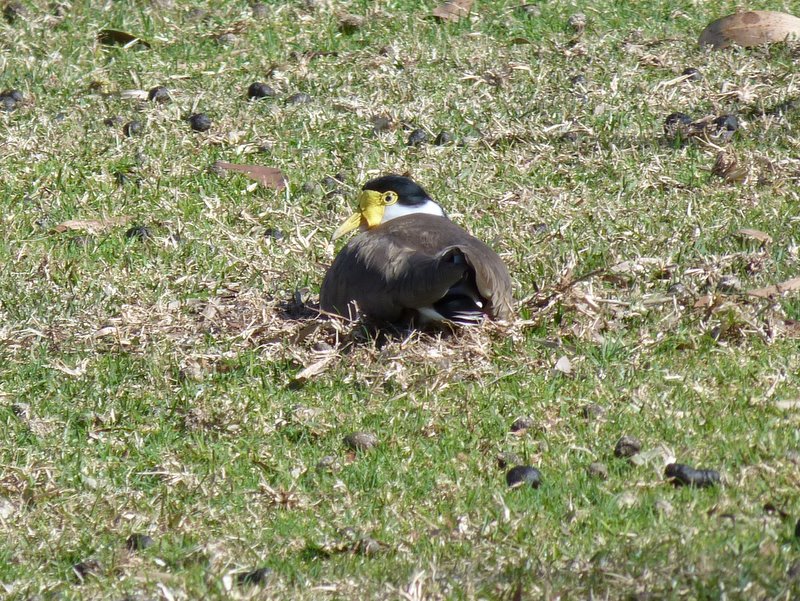
A Masked Lapwing nests on a football oval. Photo: Ian Fraser.
But come August, with the morning frost still on the ground, they split up into pairs, make a simple flat bowl grass nest and let their hormones take over.
When the eggs hatch after about a month, the fluffy mottled brown-and-white chicks are led away by their parents into the safety of long grass where they can hide. Then to everyone’s relief, they wind back the aggression.
Plovers are among the few species which benefitted from European settlers with their pasture lands, and later ovals, nature strips, golf courses and aerodromes. These expanses of short grasses were seemingly made for Masked Lapwings, and they took advantage of it with enthusiasm (not that you’re likely to detect any gratitude of course).
In northern Australia another race of Masked Lapwings, with no spurs but big yellow fleshy face wattles, was separated from the southern birds we know. If nature had been left to take its course, they would eventually have evolved into a separate species, but we rarely allow nature’s ways to proceed uninterrupted.
With the provision of open grassy areas that are part of our way of life, the southern lapwings spread north, eventually meeting their long-forgotten relations around Townsville where they interbred.
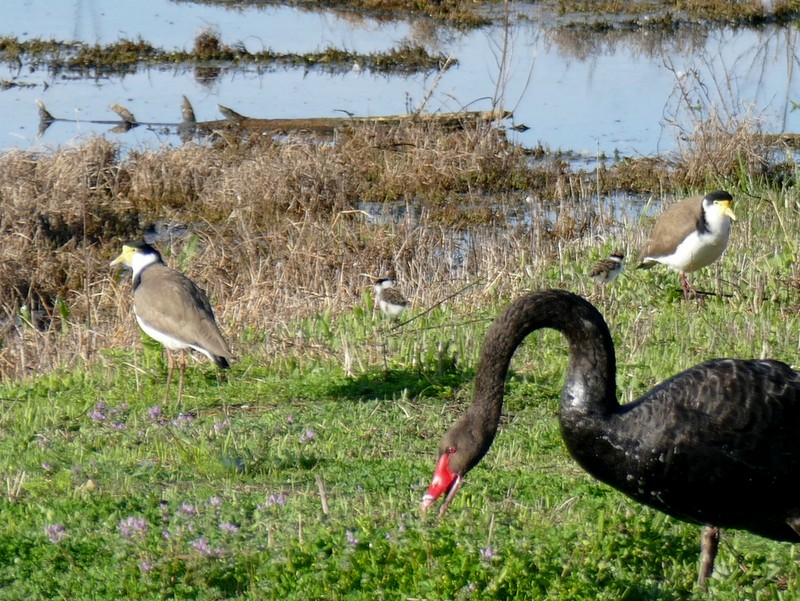
A Masked Lapwing with chicks at Jerrabomberra Wetlands. Photo: Ian Fraser.
The same habitat changes have enabled them to extend their range north into New Guinea, south into Tasmania and across the Tasman Sea to New Zealand. They are among the most familiar and commonly encountered birds in the most populated parts of Australia.
Most plovers (and dotterels as we tend to call the smaller species) are shore birds. But some species, including the lapwings, have moved inland and are no longer dependent on water, though the Masked Lapwings are not usually found too far from it. Some lapwings paddle in pools or swamps for food and others may be found on rocky platforms at the coast.
Meantime, be aware of the Canberra lapwings which may be nesting in almost any flat grassy areas (though they have also been known to nest on flat roofs) and give them some space. If you don’t, they’ll demand it soon enough! It won’t be long though before their chicks will have left the nest and the parents cease to be such terrors.
Ian Fraser is a Canberra naturalist, conservationist and author. He has written on all aspects of natural history, advised the ACT Government on biodiversity and published multiple guides to the region’s flora and fauna.












